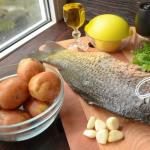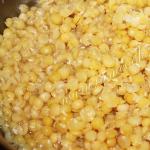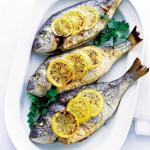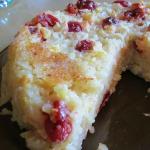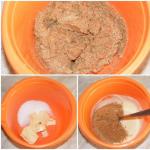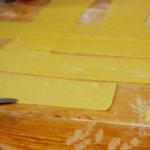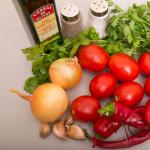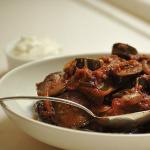Pleasant deja vu
Everyone has been familiar with birch sap since childhood, which is a colorless, slightly cloudy water with a pleasant sweet taste. Every spring, from mid-March to the end of April, it is actively collected. To do this, it is enough to make a notch in the tree and insert a gutter there through which the juice will flow into a pre-prepared container. Then you need to leave all this for a day, and the very next day you can enjoy a wonderful natural drink.
But, unfortunately, it does not last long at all - at most two days at room temperature, and up to three or four days you can extend its life in a cool place. Let's find out how to preserve birch sap and preserve its taste for at least several months.
Canning at home
To preserve birch sap at home without much hassle, you need to prepare the following ingredients: 1.5-2 liters of birch drink, 0.25 kg of sugar, about 6-8 g of citric acid.
Next, we select the necessary utensils for pasteurization. We filter the collected juice through cheesecloth to clear it of debris. Then add the above ingredients to it and set to simmer over low heat. While the drink is brewing, try to stir it as often as possible and do not forget to remove the foam that forms during the cooking process. If this is not done on time, an unpleasant reddish-yellow color may form in the finished product.

sediment Now a clearer picture emerges of how to preserve birch sap at home.
Meanwhile, you need to make sure that the drink does not go through the boiling phase. As soon as the first bubbles begin to appear, immediately remove it from the heat.
Then you need to clean the birch sap even more thoroughly. To do this, we once again pass it through a sieve and gauze folded in several layers. This is practically the entire answer to the question of how to preserve birch sap. Then all that remains is to pour it into and close the lids. After all the dishes are filled with juice, we turn the jars upside down and leave them in that position for a day. After this time, we turn them over again to their original position and put them in a cool place for better storage of the drink.

Let's now figure out whether canned birch sap, prepared with your own hands, is really healthy.
Let's start with the fact that a fresh, just collected drink will undoubtedly be useful to every person. In the recent past, even patients with tuberculosis were treated with it. Birch sap is also indicated for people suffering from allergies and skin diseases. The drink is also effective in the fight against teenage acne on the face. But, unfortunately, it loses all these healing properties after a few hours.
Although we now know how to preserve birch sap, it is clear from the above that after processing there is nothing useful left in this drink. But it can’t do any harm either. When consumed, you simply enjoy its very pleasant taste. And if during the canning process you add some fruits and berries (grapes, apples, pears, etc.) to this juice, it will turn out even tastier. There is no shame in serving such a wonderful compote. And believe me, no one will refuse the supplement.
Birch sap has many beneficial properties and has a beneficial effect on the body. In addition, it quenches thirst very well. Unfortunately, due to its short shelf life, it is necessary to resort to various methods of processing and preservation in order to preserve it longer.
Conservation
The simplest and most reliable way to preserve birch sap is to roll it into jars. There are many ways, depending on tastes and capabilities. During Soviet times, the most popular method of industrially preserving juice was preserving it in 3-liter jars with sugar and lemon juice. The juice was tart, sweet and sour and quite rich in taste. Today, preservation has become somewhat more complicated with various additives. They began to add medicinal herbs, fresh citrus fruits, etc. to birch sap.
Universal implies the use of exclusively natural ingredients without artificially isolated oxidizing agents. To preserve 3 liters of birch sap you will need 2 tablespoons of sugar and a quarter of a lemon or any citrus fruit along with zest.
The jar is sterilized and sugar and citrus are added to it. Birch sap is brought to a boil, poured into a prepared jar and sealed with a sterilized lid. The rolled juice is turned over onto the lid and wrapped in heat for additional sterilization.
Alternative Preservation Methods
Kvass made from birch sap is very tasty and can be stored for a long time. Birch sap (10 liters) is poured into any available container and a handful of raisins is poured in. For better fermentation and to give a special leaven taste, you can add a few rye crackers. Crackers can be replaced with malt. To improve the taste, lemon zest is again added. The variations in fermentation are quite varied. Some people prefer using yeast for faster results. In any case, the fermentation process continues for at least a week and you can start drinking kvass almost immediately. Ready kvass is stored in a cool place for several months.
Some housewives with freezers have mastered freezing birch sap. But it takes up a lot of space and this storage method is impractical. It is much more preferable to use boiling to increase the concentration and subsequent dilution with water for consumption. To do this, birch sap is evaporated at a temperature of 60°C until the volume is reduced by 75% and poured into jars.
Sources:
- Birch juice
- Birch sap: how to drink, how to store
Traditionally, birch sap is drunk immediately after collection, before it loses its freshness and maximum benefits. It can be stored in the refrigerator or cellar for 2-3 days, during which time it will not spoil. But then it will inevitably sour, ferment and turn into a toxic liquid. However, people, who have known about the healing properties of birch sap since time immemorial, have learned to store it in winter. Many of these recipes are still used today.
You will need
- - birch sap;
- - granulated sugar;
- - raisin;
- - yeast;
- - dried fruits;
- - jars or bottles for storing juice;
- - metal lids and plugs.
Instructions
Fermentation. Take 3 liters of birch sap, 6 tsp. granulated sugar and 10-15 raisins. Pour the juice into a clean 3-liter jar kept over steam for 10 minutes, pour out the sand and add the washed raisins. Mix everything well and cover with a loose lid or balloon. After 2-3 days, a highly carbonated drink with a pleasant taste is formed in the jar, in which all the birch sap remains. This drink can be stored for quite a long time in a cool place in containers with closed lids.
Conservation. Pour birch sap into an enamel pan and heat to 80°C. Do not bring it to a boil under any circumstances. Quickly pour the hot juice into the prepared ones, i.e. bottles or jars pre-steamed over boiling water. Cover the bottles with corks (loosely), the jars with lids and place them in a large saucepan with water heated to 90°C for pasteurization. Soak them in this pan, placed on the stove over the lowest heat, for 20-30 minutes. Then close the bottles tightly with corks, and roll up the jars with metal lids. Store in a dark place.
You can make your work easier by eliminating the pasteurization procedure. To do this, after pouring the heated juice into bottles and jars, immediately close them tightly with corks and metal lids, quickly wrap them in old blankets (fur coats, shawls, scarves) and set aside until they cool naturally, after which they are stored in a dark place.
Yeast kvass. Take 1 liter of birch sap, 15-20 grams of fresh (pressed) yeast or 5-6 grams of dry yeast and 5-10 raisins. Heat the juice in an enamel pan to 30-35oC, then pour it into a jar or bottle, add yeast and raisins. Close with a tight lid and place in a cool, dark place. Kvass will be ready in 2 weeks. In the absence of heat and light, it can be stored for up to 6-8 months.
Kvass. To prepare this kvass, you will need 5 liters of birch sap and 800 grams of dried fruits (if you have less juice, reduce the amount of dried fruits accordingly). Pour the juice into an enamel, glass or ceramic bowl, cover with a towel and leave at room temperature for several days. At the first signs of fermentation (clouding, islands of foam, sour smell, etc.), add thoroughly washed dried fruits, cover again with a towel and place in a cool, dark place. After 2 weeks, strain the finished kvass through a sieve or cheesecloth and pour into jars or bottles, closing with tight lids (corks). This kvass is stored in the refrigerator or in the cellar until the next birch sap collection season.
Syrup. Place an enamel pan with birch sap on low heat and evaporate it until the syrup becomes thick. The final product should have the consistency of fresh honey and a slight lemony tint. It usually contains 60% sugar and lasts almost forever, just like natural honey. It can be added to tea, compotes and jelly, diluted with water and used as a fruit drink.
Birch sap contains the vital energy of a slender tree. It is rich in microelements, vitamins, refreshes and has a healing effect. How to properly roll up birch sap at home? The answer to this question lies in different preservation recipes using lemon, orange and citric acid.
Fragrant, clear juice is not just a tasty drink with an original taste, but a whole natural first aid kit in one glass. “Birch tears” contain phytoncides, organic acids, enzymes and almost all microelements necessary for the human body.
Attention! To get rid of various diseases and strengthen the body, it is recommended to drink from 8 to 10 liters. birch sap per year.

The peculiarity of the juice is that it is structured and has so many unique properties that it is quite difficult to list everything. Suffice it to say that birch sap has a pronounced antitumor effect and antioxidant properties. In addition, it dissolves stones in the bladder and kidneys, and is used in the treatment of ulcers, bronchitis, and tuberculosis. It has an anthelmintic and diuretic effect, strengthens the immune system and protects against vitamin deficiency. And it is even used to get rid of wrinkles. In fact, this is a unique medicine.
When and where is birch sap collected?
“Tears of birch” are collected during the spring melting of snow, until the tree is decorated with young sticky leaves. In April, birch trees begin to actively flow sap and they literally “cry”, secreting a clear liquid.

Birch sap is collected in the spring
The collection period is short, only 15-20 days, and during this time experienced collectors extract enough juice for drinking and for storing for future use.
By the way, purchased birch sap in a classic three-liter jar is only a semblance of fresh healing liquid. If you are lucky and you find yourself in Belarus or central Russia at the right time, then you can use this chance.
The process of extracting the “universal medicine”
Extraction of any value requires knowledge, skills and tools. Only mature birch trees with a trunk diameter of 20 cm or more are suitable for collecting liquid. In trunks 20-25 cm, one hole is drilled, 25 - 35 cm - two.
An adult birch tree can give up to 6 liters per day. juice, but it is better to collect 2 liters. from every tree.

Attention! It has been scientifically proven that correct collection of sap does not harm birch groves and forests. On the contrary, over several years of intensive production, sap flow becomes more abundant.
Step-by-step guide to collecting healing liquid:
- First you need to remove a section of bark at a height of 40 cm from the ground.
- Drill a hole up to 5 cm with a drill.
- Insert a gutter, any tube, a transparent medical dropper or gauze through which the drops will flow.
- Place a collection container on the ground and lower the end of the tube or gutter into it. The best conditions for a bountiful “harvest” are sunny weather and time from 12 to 18 pm.
- As practitioners say, there is no need to spend 24 hours in front of the device. It is enough to check it 1-2 times. in a day.
- After receiving 2 liters of the “universal medicine”, the hole is filled with moss or a stick treated with a natural pest repellent.

Preparing birch sap for the winter with citric acid
Typically, lovers of woody drinks consume some of the juice immediately after extraction, and leave some for canning. A larger percentage of the unique beneficial substances contained in “birch tears” can be preserved with proper processing.

Advice. The main thing is to prevent the drink from boiling, otherwise some of the healing properties will be lost.
To start work, you need to prepare glass jars, 5 liters. clear juice, 25 gr. citric acid, 630 gr. Sahara. When these ingredients are added, the juice with a weak taste acquires a bright sweetness and slight sourness.
Canning steps:
- Pour all the juice into a saucepan and place on low heat. As soon as foam appears, it must be removed. If bubbles appear, indicating the beginning of boiling, quickly turn off the heat.
- Add citric acid and sugar to the drink.
- Before pouring birch sap into sterile jars, filter it through a fine sieve or cheesecloth.
- Cover the jars or bottles with lids and, after cooling, take them to a cool place. Some people advise keeping the twists in hot water for about 15 minutes. for additional sterilization.

Birch drink with lemon or orange
Birch sap with a subtle citrus aroma will appeal even to those who do not like clear drinks. Calculating the ingredients for this recipe is very simple:
- the total volume of 3 liter cans should be equal to the number of liters of juice;
- Each jar will take 2 tbsp. l. sugar and 1 slice of lemon or orange. What exactly to use depends on your taste. To begin with, you can close several blanks with lemon and some with orange.
Advice. An interesting variation of the recipe was proposed by residents of a village bordering a birch forest. Instead of fruit, they put sucking candies in jars: barberries or duchess.

Cooking steps:
- Bring the juice to a hint of a boil.
- Turn off quickly and pour into prepared containers.
- Place the specified amount of sugar and fruit into each jar.
Preservation of birch sap with mint, tangerines and dried fruits
Transparent birch sap for a cook is like a blank sheet of Whatman paper for an artist. You can approach canning creatively and enhance the taste of the drink with various additives:
- The collected and strained juice is brought to a boil and turned off.
- Add a sprig of mint, a slice of peeled tangerine, and a few slices of lemon to the aromatic liquid. It’s better without zest, it will give a bitter aftertaste.
- Then add pre-washed dried fruits. For example, raisins or rose hips.
- Add citric acid to the pan in a proportion of ½ tsp. for 10 l. juice Bring to a boil again and pour into prepared containers.

Exquisite drink. Juice plus currant cuttings
Fans of colorless juice with a smooth, slightly sweet taste and pronounced aroma will enjoy the infusion with currant cuttings. The principles of its preparation are the same as in previous versions. You just need to wash the branches in advance and cut them so that they fit well into the jars. Then place them in sterile containers and pour hot, strained birch sap. An exquisite drink for the winter is ready!

Kvass infused with wood drink
One of the original recipes for preserving “birch tears” is making kvass.
To obtain a fermented drink, you need to heat the birch sap to 30 °C. Add 15-20 g to the pan with liquid. yeast and a few raisins. If you like citrus flavors, you can add lemon zest to your drink. The last stage of preparation is fermentation for 2 weeks.

Advice. The lid of birch kvass must be periodically removed during fermentation, releasing the resulting gases.
As a result, the juice turns into a delicious carbonated drink with a distinct taste. You can store it all summer.
Recently, healing “birch tears” have practically disappeared from store shelves, but they have unique properties that cannot be replaced by anything else. Preparing a wonderful drink for future use can save you from spring vitamin deficiency and help in the fight against ailments. And simply please with an unforgettable soft taste.
Preparation and preservation of birch sap - video
The photo for this recipe is shown above.
Ingredients
- birch sap – 1.5-2 l;
- granulated sugar – 250 g;
- citric acid – 8 g.
Preparation
1. First of all, strain the juice through several layers of gauze. When collecting it, small debris or insects could get into the container.
2. Pour the strained juice into a saucepan, add sugar and citric acid and simmer on low heat. A foam will form on the surface; it must be removed periodically; if this is not done, the juice will acquire an unpleasant yellow sediment.
3. Do not let the drink boil; as soon as the first signs of boiling appear, immediately turn off the heat. Strain again through a sieve and cheesecloth, and you can pour into sterilized jars.
4. Seal the jars with lids, turn them upside down for better sealing, wrap them in a warm blanket and leave them in this position to knock. After a day, turn the jars over to their normal position, wrap them again and keep them like that until they cool completely, then lower them into the basement or cellar.
To preserve birch sap, you can use other recipes, with all kinds of additives.
Birch sap with orange
This drink with citrus notes will appeal to both adults and children; its regular use will have a beneficial effect on the health of all family members.
Ingredients
- birch sap – 6 l;
- citric acid – 3 teaspoons;
- granulated sugar – 300 g;
- orange – ½ piece.
Preparation
1. Place sugar, orange slices and citric acid in two sterilized 3-liter jars.
2. Bring the strained birch sap to a boil, immediately pour into jars and seal with lids.
Birch sap with rose hips
The drink will be even more fortified if you add dried fruits to it. We use rose hips, you can use any dried fruit you have. 
Ingredients
- birch sap – 3 l;
- rose hips - a handful;
- granulated sugar - ¾ cup.
Preparation
1. Bring the strained juice to a boil, skim off any foam that appears, add sugar and rose hips. Boil everything together for 5-10 minutes.
2. Pour into prepared jars and roll up.
Birch sap lemonade
The resulting drink is very tasty and refreshing. Prepare it in the spring, and in the summer on hot days, open the jar, cool and enjoy. 
Ingredients
- birch sap – 6 l;
- granulated sugar – 1.5 cups;
- lollipops (“Duchess”, “Barberry”, “Mint”) - 4-6 pieces;
- citric acid – 1 teaspoon.
Preparation
1. Strain the birch sap, put on the fire and bring to a boil. Remove any foam that appears, then add citric acid, sugar and candy. Boil everything together over very low heat for 7-8 minutes.
2. Pour into jars and seal with lids.
Birch sap wine
Lovers of wine drinks will appreciate the option made from birch sap.

Ingredients
- birch sap – 12.5 l;
- raisins – 40 pieces;
- granulated sugar – 2.5 kg;
- honey – 75 ml.
Preparation
1. First of all, you need to prepare a raisin starter. Place the raisins in a bowl, cover with clean water, add 25 g of sugar, stir and leave for a couple of days.
2. Strain the birch sap, pour it into a large saucepan and place on low heat to boil. When the volume of juice has decreased by a third, add sugar, stir and cook a little more until the sugar grains are completely dissolved. Turn off the heat and let the liquid cool until lukewarm.
3. Place honey in a warm birch broth, stir thoroughly until it dissolves, and now let it cool completely.
4. After cooling, add the raisin starter, stir and pour everything into a large glass bottle. Attach an airtight water seal to the neck and leave it in this state for 15-20 days for fermentation.
Berezovitsa (birch sap) is collected in the spring. This drink is very beneficial for the human body. It contains a huge amount of vitamins and tannins that have a positive effect on health. Since ancient times, people have treated almost all their diseases with this liquid, from vitamin deficiency to lung problems. Birch nectar also perfectly cleanses and heals the skin, and can compete with the best cosmetics. But do not assume that this is a panacea for all ills. The sap provided by the birch tree can be used as a stimulant.
This drink is very beneficial for the human body.
You just need to know how to collect birch “tears” correctly so as not to kill the tree. You can collect the drink when the trees begin to bud. This is the period from approximately mid-March to the end of April.
To stock up on juice you need:
- Find a birch tree on which the buds have already begun to swell. The girth of the tree must be at least 20 cm. The older the tree, the sweeter its nectar.
- Drill a hole in the wood with a drill 1.5 cm in diameter. You need to drill shallow. The sap is found between the bark and the wood.
- Attention! Never use an axe. It is much easier for a tree to heal a hole than a cut. Don't kill the tree.
- Insert a conductor into the hole for flowing juice from last year's grass. This is the best way to collect everything without the liquid spreading down the tree post.
- Place the bottle to catch the liquid. A bottle will be an ideal collection container. Insects and debris will not get into it.
- After you have collected the required amount of sap, or if the tree begins to produce very little, seal the hole with wax or make a wooden plug from a branch or wood chip.
- Come for filled containers 2-3 times a day.
The tree will gradually heal the hole. Do not torture the birch tree or drill a new hole. It’s better to drain the sap from another birch tree.
Do not pick birch trees that are located near highways. Trees absorb very well all exhaust gases and harmful substances produced by cars.




